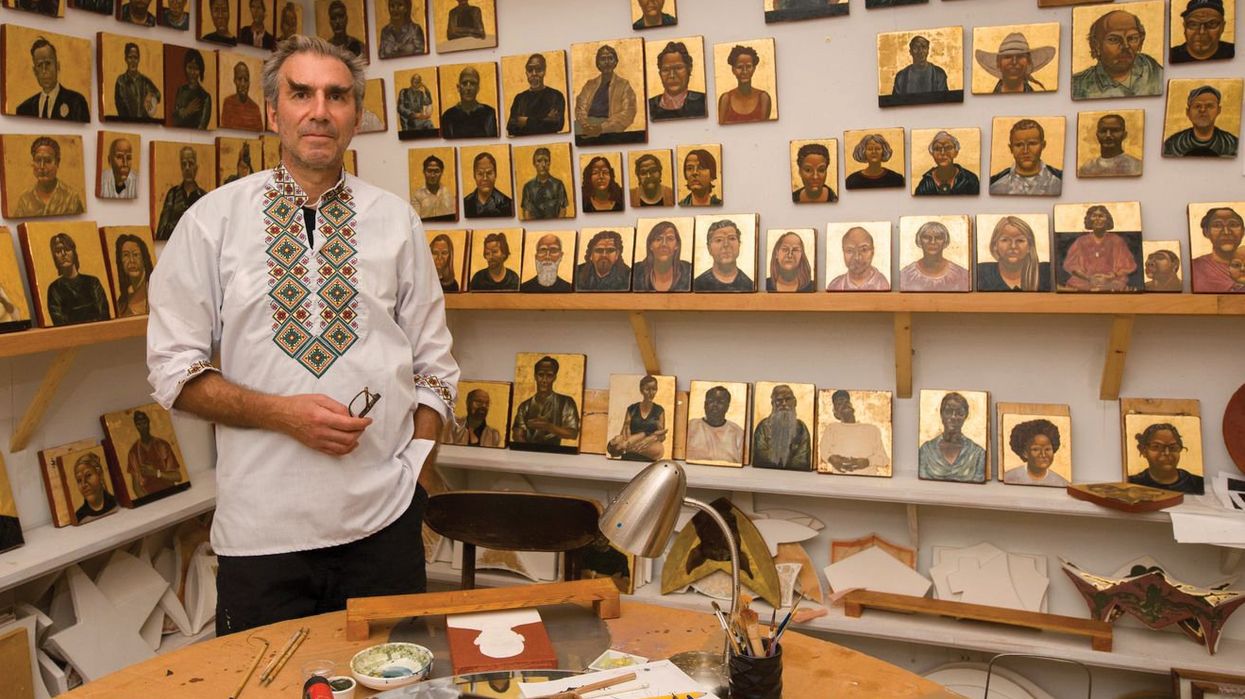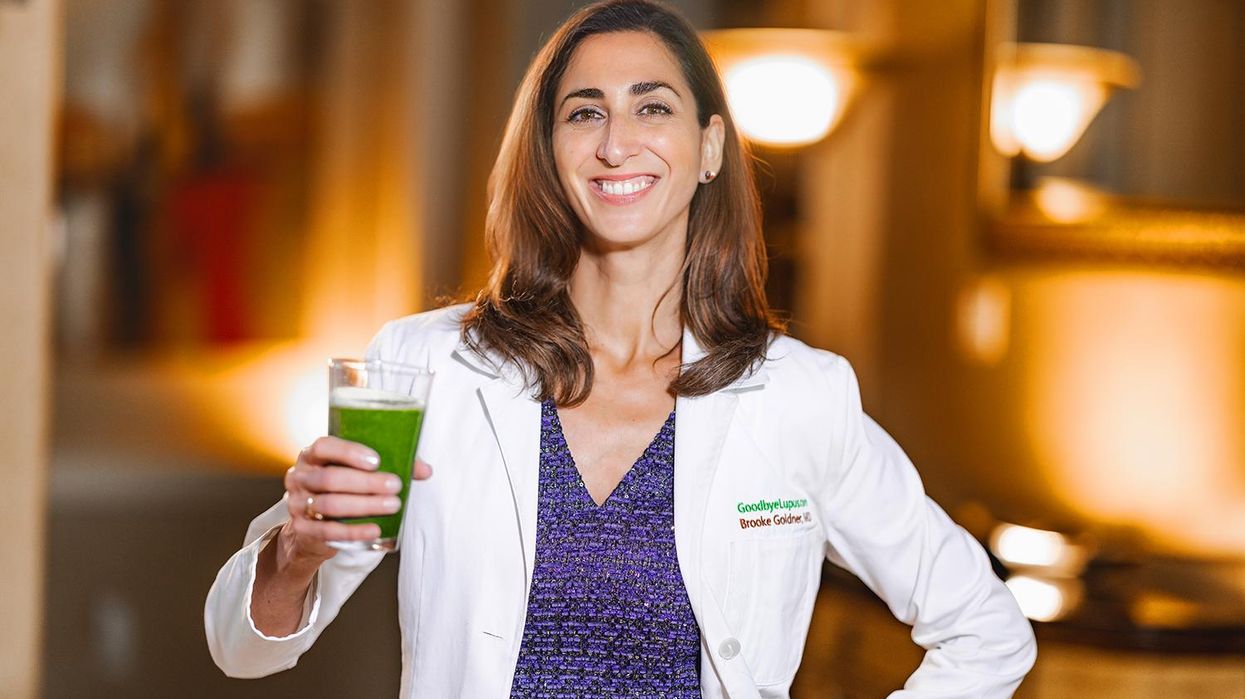An Art-Scene Power Player Honors Houston Creatives with Menil Portrait Show

Topchy with dozens of his portraits that will hang at the Menil Aug. 4-Jan. 21. (photo by Caroline Philippone)
PAINTER, SCULPTOR AND performance artist Nestor Topchy is so integral to the history and social landscape of Houston’s art world that it’s impossible to imagine what the city might be like without him. From co-founding the sprawling art and performance compound Zocalo/TempIO in 1989 with Rick Lowe, to envisioning the potential of HIVE (Habitable Interdisciplinary Visionary Environment), an artist-run community in development near EaDo, Topchy has always realized his artistic and architectural dreams.
Having turned 60 in July, Topchy has no intention of resting on his laurels, and is preparing for the first museum presentation of his ongoing project, The Iconic Portrait Strand, a collection of more than 100 paintings of fellow artists and other creative luminaries, on view at the Menil Collection Aug. 4 through Jan. 21, 2024.
Born in New Jersey, Topchy came to Houston in 1985 to get his MFA at UH. He vividly recalls pulling up in front of Lawndale Annex, the temporary home to UH’s painting and sculpture departments, stepping out of his ’72 Mercury, and getting soaked by one of the city’s formidable rainstorms. Almost immediately, the sun came out and baked him dry. He graciously calls this baptism “interesting.”
He soon moved into Commerce Street Artists Warehouse, a 27,000-square-foot space transformed by its residents from a dank hellhole filled with human excrement and fiberglass residue into a lively creative space, with artist studios and a performance bay. Former Menil Collection director Walter Hopps attended several Commerce Street exhibitions and happenings. “He would cross the room to talk to me,” says Topchy, who later painted Hopps, along with other contributors to the vibrancy of Houston’s art scene, including Wayne Gilbert and the late Forrest Prince, for The Iconic Portrait Strand.
Topchy began the portraits 15 years ago, painting on wooden panels with materials and techniques used in religious icons of the Ukrainian Eastern Orthodox Church (Topchy’s father was Ukranian). While Topchy describes his portraits as “iconic,” they should not be confused with icons displayed in the Menil’s Medieval and Byzantine art galleries. “An icon is from a vision and an archetype that is adhered to faithfully,” explains Topchy, who thinks of his artworks as a way to honor his friends and community. “It’s not a form of self-expression. It’s not even a portrait.”
Each portrait starts with a sitting, during which Topchy draws the subject. He also makes use of a camera lucida, a device that harkens back to optical projection devices used by the Old Masters. (“It’s a valuable shortcut for getting measurements and creating a composition,” says Topchy. “Especially if you want to spend time chatting and having tea with the sitter and don’t want their neck to get tired.”) Once complete, each portrait radiates with an otherworldly glow.
“The portraits tell me what they want to be,” says Topchy. “They’re not done to flatter. Each has its own life and makes demands and if you’re sensitive and open to that, you respond.”

Al “Kool B” LeBlanc by Nestor Topchy

Forrest Prince by Nestor Topchy

Rose Arriaga by Nestor Topchy

Wayne Gilbert by Nestor Topchy



